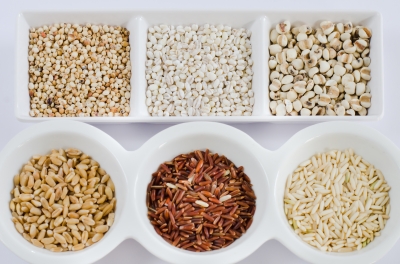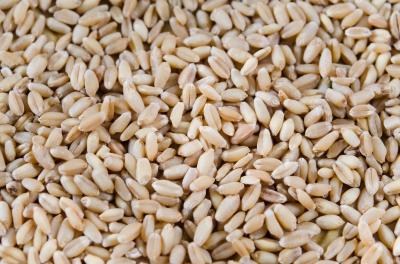Mitigating micronutrient malnutrition
Micronutrient malnutrition in developing countries hinders countless people to reach their full physical and cognitive potential. This is mainly caused by cereal-based, monotonous diets low in micronutrients. Research may pave the way to increasing the nutritional value of cereal-based diets.

Iron fortification has been practiced in developed countries since the last century and pregnant women and infants often reach their nutritional requirements only with micronutrient supplements or fortified food products. Notably, the prevalence of iron deficiency in infants in the US and Europe only receded after the introduction of iron fortified infant foods. Similarly, iodine deficiency disorders are successfully kept in check with universal salt iodization, a low cost strategy to prevent cognitive dysfunction.
Unbalanced diet
The main cause for several micronutrient deficiencies is a monotonous, cereal based diet with insufficient amounts of nutrient dense foods such as animal source products (meat, offal, dairy and eggs), vegetables, roots, nuts, seeds and fruits. Cereals provide abundant energy, can be stored over long term without spoilage, are efficiently produced and have a low carbon foot-print, but are a poor source of micronutrients. On the other hand, they also often contain large amounts of phytic acid, a molecule able to inhibit iron, zinc and calcium absorption in the digestive tract.
While diet diversification is strongly required, combating worldwide micronutrient malnutrition by simply increasing intake of animal source foods is likely not to be sustainable. A recent editorial (1) postulated that the massive increase in cereal intake during the Agricultural Revolution (also called Neolithic Revolution: the conversion from hunting and gathering to agriculture and settlement) induced nutritional deficiencies. This malnutrition, in addition to population growth and the spread of infectious and parasitic diseases, reduced human body height and increased rates of stunted development (1), conditions still widely encountered in several low income countries. The author provocatively noted that pre agricultural humans may have had body sizes comparable to those of modern humans living in western societies (1).
Curtailing micronutrient deficiencies

Fortification aims at increasing the nutritional density of cereals, an approach that may become even more relevant as sustainably sourced, nutritious alternatives to animal source foods will be required.
Researchers are currently testing several approaches to increase the nutritional quality of cereal staples. Adding phytase (a phytate degrading enzyme) to a meal can increase zinc, iron and calcium absorption from cereal blends (2). Interestingly, this enzymatic step is effective both when the enzyme is consumed as a supplement (for instance as a pill) but also when a meal contains it in form of wheat or barley bran, known to have high phytate degrading activity (3, 4).
Another example comes from externe Seiteagriculturecall_made, where crop breeders pay more and more attention to the micronutrient content of agricultural staples. A recent report suggests that spraying the growing wheat leaves with zinc can result in 30 to 40 percent increase in zinc content in wheat grains (5).
Innovative ideas, grounded in solid biological evidence, give us new opportunities to curtail micronutrient deficiencies. As a result of micronutrient interventions, an increasing proportion of the world’s population can reach its full development potential and this is widely recognized as a major long term economic opportunity, for example by the think-tank externe SeiteCopenhagen Consensus Centercall_made.
Further information
(1) Dewey KG. The Challenge of Meeting Nutrient Needs of Infants and Young Children during the Period of Complementary Feeding: An Evolutionary Perspective. J Nutr. 2013 Dec;143:2050-4.
(2) Troesch B, Egli I, Zeder C, Hurrell RF, de Pee S, Zimmermann MB. Optimization of a phytase-containing micronutrient powder with low amounts of highly bioavailable iron for in-home fortification of complementary foods. American Journal of Clinical Nutrition. 2009 Feb 1;89:539-44.
(3) Egli I, Davidsson L, Juillerat MA, Barclay D, Hurrell R. Phytic acid degradation in complementary foods using phytase naturally occurring in whole grain cereals. Journal of Food Science. 2003;68:1855-9.
(4) Koréissi-Dembélé Y, Fanou-Fogny N, Moretti D, Schuth S, Dossa RAM, Egli I, Zimmermann MB, Brouwer ID. Dephytinisation with Intrinsic Wheat Phytase and Iron Fortification Significantly Increase Iron Absorption from Fonio (Digitaria exilis) Meals in West African Women. PloS one. 2013;8:e70613.
(5) Cakmak I, Kalayci M, Kaya Y, Torun AA, Aydin N, Wang Y, Arisoy Z, Erdem H, Yazici A, et al. Biofortification and Localization of Zinc in Wheat Grain. J Agr Food Chem. 2010 Aug 25;58:9092-102.
